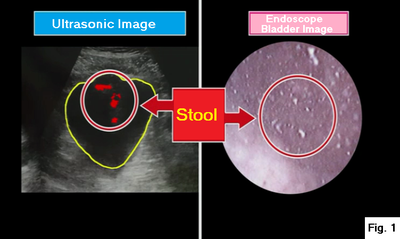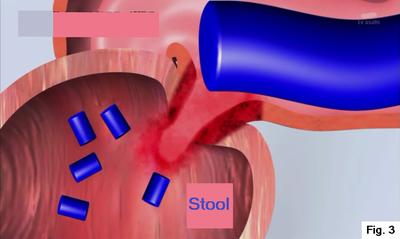|
About 10 years ago, when she went hiking, she went to the bathroom and felt the sensation of residual urine for the first time and when she had a physical examination, she was diagnosed with bladder infection.
Bladder infection is a disease that bacteria goes into the bladder and causes inflammation, causing symptoms such as the sensation of residual urine or painful urination. If the inflammation is spread in the urethra, painful urination is caused. If the inflammation is spread in the bladder, the nerves controlling the desire to urinate are malfunctioned and even if there is no urine accumulated, they want to urinate, in other words, the sensation of residual urine is caused. After taking prescribed medicine (antibiotics), her sensation of residual urine disappeared. But at this moment, she didn’t notice that her bladder infection was not the ordinary bladder infection but the bladder infection caused by a more serious problem. She felt the sensation of residual urine again and this time she couldn’t urinate at all. So she went see a specialist of urology and had various kinds of tests. The result was bladder infection because there was no abnormality in the bladder and kidney, but there was inflammation in the bladder. While she was taking prescribed medicine, the symptoms were suppressed, but about a month later the bladder infection came back again. Every time the bladder infection came back, she had to take antibiotics without knowing what caused the bladder infection. 5 years after the first bladder infection, she started to feel pain on urination. She took prescribed medicine, but not only the pain didn’t go away but also the sensation of residual urine became stronger than before. She went see doctors other than the urologist including the internal medicine, a gynecologist and even a psychiatrist, but the cause was not found. So she had to keep taking antibiotics for about 10 years. She happened to see a doctor who was a specialist of ultrasound. Her kidneys, urethra and bladder were checked with ultrasound, but no abnormality was found. So the doctor asked her if she noticed anything else and she mentioned that she sometimes had gas like a fart when she urinated. Her bladder was checked with ultrasound again and there were white dots moving around. The doctor checked the inside her bladder with a bladder endoscope. The inside of her bladder was cloudy with small floaters. Then CT scan for the large intestine was performed (Fig. 1). Her disease turned out to be Colon diverticulitis. Colon diverticulitis is a disease that a part of the wall of the colon sticks out and pouches are formed and stool is accumulated in the pouches, causing inflammation. This disease often happens to people with constipation or elderlies. Diverticulitis is not rare disease but in her case, the location of diverticulitis was very rare. In her case, diverticulitis happened right next to the bladder, causing adhesion. The adhesion made a hole to the bladder. Stools in the large intestine went into the bladder. The floaters seen with colon endoscope were stools. The gas which was supposed to be eliminated from the large intestine was eliminated with urination (Fig. 2) (Fig. 3). As stools always went into the bladder, germs increased even if she took antibiotics, causing repetitive bladder infection. Her life was saved by the surgery to remove the adhesion.
0 Comments
Leave a Reply. |
IchiroThis Blog is for a memo of my clinical realizations, information about health I have learned recently and update information. Archives
April 2024
Categories
All
|



 RSS Feed
RSS Feed